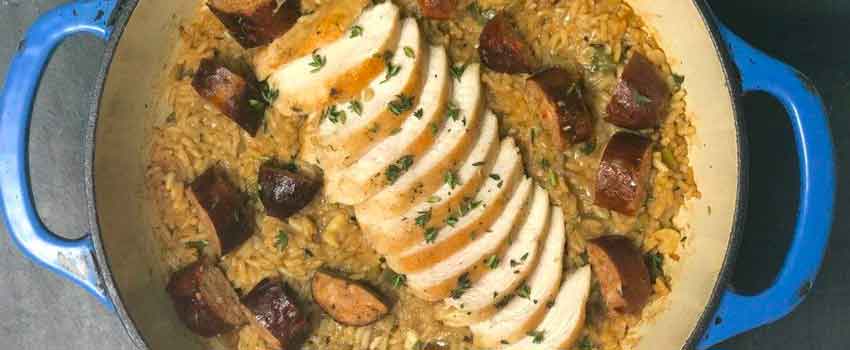The deep, meaty flavors of Creole jambalaya contrast the brighter tomato-based version that Cajun influences brought to the dish. Either way you make it dish, be sure to double this recipe if you plan on having more that four hungry Mardi Gras revelers. Chef John developed this recipe to be enjoyed with a crowd.
At the intersection of food, religion and language sits the rich and unique tradition of Mardi Gras. The debauchery associated with Ash Wednesday’s pre-dawn binge came after Christianity adopted the pagan ritual celebrating spring, a sort of loosening before the start Lent. Mardi Gras celebrations spread far and wide as Catholic countries colonized the New World, picking up the colors, aromas and traditions from their new lands to create celebrations from Rio’s Carnaval to New Orleans’s epic parades.
The Creoles of Louisiana were descendants of French and Spanish aristocrats trying their luck in the New World, borrowing their name from the Spanish word Criollo (meaning, curiously, that you were born in the new lands of pure Spanish decent, despite the fact that they almost immediately began intermarrying with Native Americans). These settlers brought Catholicism and food traditions with them, paella among them. The deep, meat-heavy brown Jambalaya you may have grown up eating on Fat Tuesday came from the Spanish and Portuguese tradition of making a large, shareable paella, which varied in proteins from seafood on the coast to pork versions inland (borrowing the Spanish word for ham, “jabon” to form the first part of the name of the dish).
The French settlers who put down roots in the Quebec region of Acadia and watched it transfer from French to British rule found themselves in a predicament. Not wanting to fight for the British, they migrated to French-ruled Louisiana and brought with them a unique cultural blend of French and First Nations foods, language and customs to form what we now know as Cajun cuisine and culture. The red jambalaya, a redder, tomato-based version of the dish, is a Cajun tradition.
Reveling in the French Quarter doesn’t hold a candle to the cacophony of Brazilian Carnaval. Borrowing its name from a Medieval Latin phrase referring to the sanctioning of meat over fish during Lent, Carnaval married Native costumes, African beats and a collaboration of culinary techniques with newfound ingredients. The Carnaval menus in Rio echo the edible indulgences of New Orleans, Paris, Puerto Rico and the dozens of other nations celebrating before the 40-day meat fast.
This Mardis Gras season, try your hand at this simple to execute Jambalaya by Chef John, the chef instructor on staff most known for exploring the deep historical roots of food and its convergence with migration.
JAMBALAYA!
Ingredients
Jambalaya
| 2 | Boneless, skinless chicken breasts | |
| 8 ounces | Andouille sausages, halved lengthwise | |
| 1 | Onion, finely chopped | |
| 1 | Celery rib, finely chopped | |
| 1 | Red bell pepper, seeded and finely chopped | |
| 1-1/2 cups | Long grain rice | |
| 5 | Garlic cloves, roughly chopped | |
| 1/2 tsp | Fresh thyme leaves | |
| 2 cups | Seafood, clam or chicken broth |
Directions
- Pat chicken dry with paper towels and season with salt and pepper. Cook sausage in 2 teaspoons oil in large nonstick saucepan over medium-high heat until browned, about 5 minutes. Transfer sausage to plate. Cook chicken in sausage fat until brown on one side, about 4 minutes. Transfer to plate with sausage.
- Add onion, celery, bell pepper, and remaining oil to empty pan and cook until softened, about 5 minutes. Stir in rice, garlic, and thyme and cook until rice turns from translucent to slightly opaque, about 2 minutes. Add broth and browned sausage, scraping up any browned bits, and bring to boil. Nestle chicken, browned-side up, to rice. Reduce heat to low and cook, covered, until chicken is cooked through, about 10 minutes
- Transfer chicken to cutting board and tent with foil. Stir rice and continue to cook, covered, until liquid is absorbed, about 15 minutes. Cut chicken into 1/2-inch pieces and stir into rice. Remove from heat and let sit, covered, until chicken is heated through, about 5 minutes. Season with salt and pepper. Serve with hot sauce (if desired).

